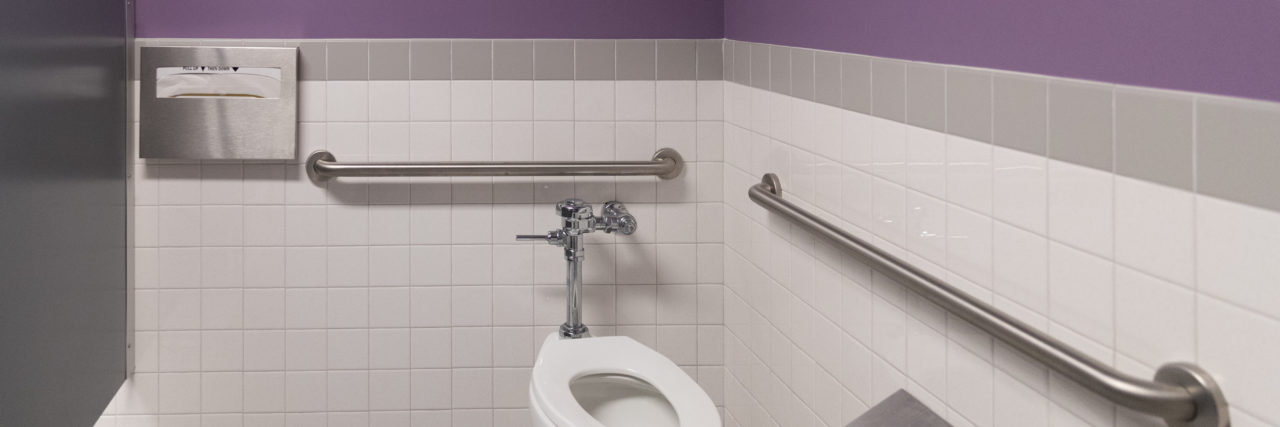I was in town recently and needed the restroom, but the stall for people with disabilities was occupied, with the unmistakable clicking sound of texting coming from within. Normally I would wait for the occupant to finish, but because I have colitis, I was desperate. In the remaining stalls, the toilets were very low and there were no grab bars. Arthritic knees and multiple sclerosis made lowering myself to that level and raising myself again difficult and painful.
Moments later, a young woman came out of the accessible stall, walking briskly as she tucked her phone into her pocket. I try not to worry about who has a disability and who does not, but I wondered if she really needed the accommodations of that stall.
Because I have so often been denied access to the stall I needed, I have developed a few pointed behaviors. If I am physically able to wait, I do. When other people waiting ask if I want an available stall, I simply explain that I need the accessible one. If I cannot wait, I take the closest stall and place my cane against the divider where it is easily visible. If the person occupying the stall is not disabled, I admit to hoping they feel guilty and even ashamed.
I have lived through this experience so many times that I have become a little irritated — and people without disabilities do not seem to understand the problem. Years ago, a colleague told me that she felt it was acceptable to use the roomier stall because of its size and comfort. Another close friend explained that employees at his job routinely used the accessible stall because it was cleaner. People seem to feel using the larger stall is acceptable if they need extra room for packages or changing clothes.
I don’t believe the stall for people with disabilities is completely off limits. When there is a long line of women waiting to use the restroom, it is only logical for an able-bodied person to use the accessible stall. However, there are ways to avoid doing so unnecessarily, to ensure people with mobility issues have access to stalls they need.
Recognize that even if the restroom is empty, a person with disabilities may arrive at any time and may be in desperate need.
Understand that although the stall for people with disabilities is roomier, it is intended for those with mobility issues, some of which may not be visible.
Use the regular stalls to assist non-disabled toddlers. If necessary because of the limited space, the door can be left open while a young mother shields the view and provides assistance. It can then be closed if she needs to use the toilet herself while her child stands inside. Some places also provide family restrooms.
Leave packages with a cashier or at a service desk for safety, rather than trying to take them into the stall.
Change clothes in the regular stalls, rather than the larger one intended to accommodate those with disabilities.
Limit texting and other phone uses to more appropriate times and places.
There are no legal restrictions on the use of restroom stalls intended for people with disabilities, but maybe it’s time we started thinking about who uses those stalls and for what purposes. Yes, regular stalls are sometimes very small, and using them can be awkward, but for a person with disabilities, it can be painful or impossible. Please remember that next time you use a public restroom.
Getty image by Helen89.

